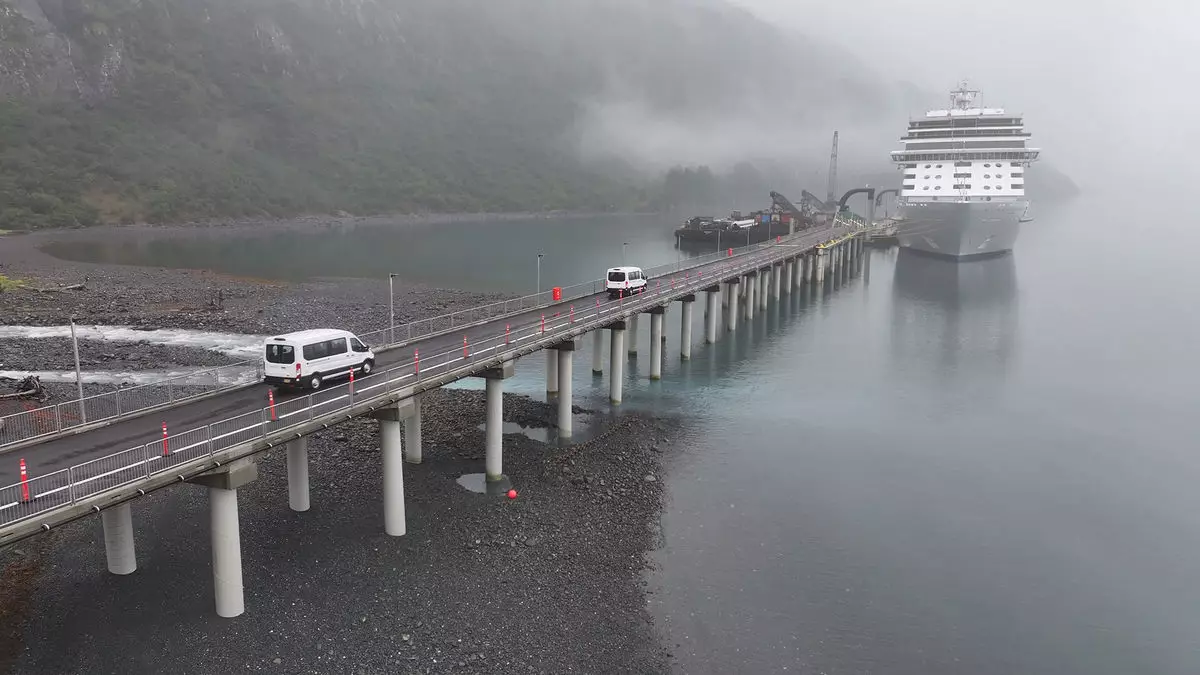Whittier, Alaska, a small, remote community known for its stark natural beauty and historical significance, is entering a new era of tourism with the unveiling of Huna Totem Corporation’s $80 million cruise terminal. Nestled in the captivating Prince William Sound, the city—located about 60 miles southeast of Anchorage—has transformed its waterfront with a modern, double-berth pier designed to facilitate increased maritime traffic. Officially launched in September, the terminal not only enhances access to the region’s natural and cultural attractions but also represents a collaborative effort involving the City of Whittier and Norwegian Cruise Line Holdings.
One of the most striking aspects of this new facility is its adaptability, which is pivotal in meeting the diverse needs of various cruise lines. The 30,000-square-foot terminal is designed with moveable walls and adaptable kiosks, which allows the space to be reconfigured for different events or specific cruise line requirements. Tor Wallen, the terminal’s manager, emphasizes the flexibility and state-of-the-art technology incorporated into the design, which ultimately enriches the experience for both cruise operators and passengers alike. This feature appeals to cruise lines eager for environments that allow custom experiences for their guests.
Moreover, the infrastructure includes dedicated lounges for crew members, ample storage for supplies, and even an integrated tsunami warning system to ensure the safety of visitors and locals. As tourism in the region grows, these thoughtful details will be invaluable in positioning Whittier as a competitive player in the cruise industry.
The terminal is not just a transit point; it serves as a gateway to an array of adventures in South Central Alaska. Huna Totem Corporation envisions the site evolving into a vibrant hub for diverse activities, catering to visitors eager to engage with the area’s natural wonders and rich cultural heritage. Plans are already underway to introduce picnic areas and fire pits, enhancing the social experience for families and groups.
Furthermore, with aspirations to offer kayak rentals, charter fishing trips, and wildlife excursions, the scope for exploration is boundless. Wallen envisions activities like crabbing tours where participants can engage in local traditions and cook their catch on the beach—an experience that encapsulates the essence of Alaskan adventure.
At its core, Huna Totem Corporation is not just committed to developing Whittier’s tourism but also to uplifting Indigenous communities tied to the region. As the company is owned by approximately 1,600 shareholders of Indigenous descent from Hoonah, it is conscious of its cultural implications and responsibilities. This endeavor is expected to catalyze economic growth while honoring local heritage.
The prospect of future developments, such as retail spaces, dining options, and cultural centers, aims to provide well-rounded experiences for visitors while potentially creating job opportunities for local residents. Huna Totem’s prior experiences through established facilities—like Icy Strait Point—offer a blueprint for success while respecting the environment and cultural sensibilities.
Whittier itself is often characterized by its unique living conditions; many of its 260 residents dwell in the remarkable Begich Towers, a former military barracks now housing essential services and amenities. Against the backdrop of the colorful 14-story building, the community’s ingenuity is commendable given the challenging weather they face.
Additionally, the Prince William Sound Museum provides a window into Whittier’s rich history, showcasing artifacts and exhibits that narrate its past as a bustling military port and terminal. These attractions serve not only to educate visitors but solidify the town’s identity, intertwining its history with its future tourism endeavors.
Huna Totem Corporation’s new cruise terminal in Whittier represents more than just a physical structure; it signifies a hopeful chapter in the town’s historical narrative as it opens the floodgates to new economic possibilities while nurturing local culture. With a solid framework aimed at adaptability and community engagement, the future of Whittier in the cruise industry appears promising. As cruise lines seek alternative destinations amid regulatory limitations in other ports, Whittier stands ready to welcome visitors, championing its spectacular landscape, rich heritage, and innovative spirit. This ambitious project also underscores the importance of infusing sustainability and cultural respect into tourism, paving the way for other regions to follow suit.


Leave a Reply